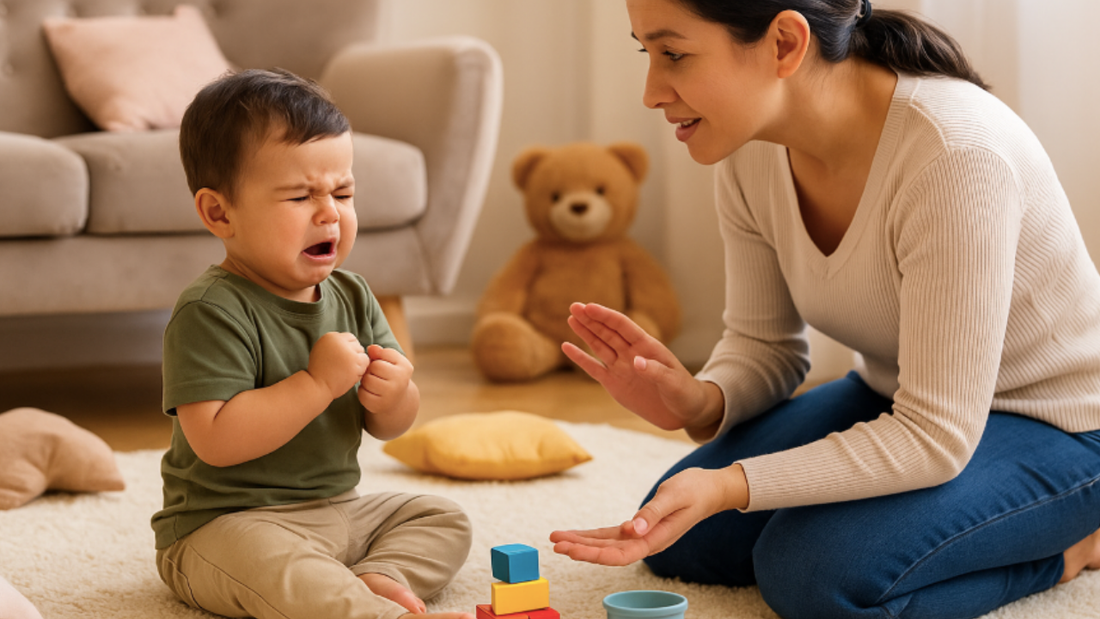
Handling Tantrums & Big Feelings: Strategies for Young Children
LiLLBUDBecause their brains are still learning how to deal with things like anger, disappointment, and excitement, toddlers and preschoolers often feel things very strongly.
When your child throws a tantrum, it's not just bad behavior; it's their way of saying something they can't quite put into words yet, like what they need, how they feel, or what their limits are. Some things that can cause tantrums are:
- Hungry or sleepy
- Being angry that you can't finish a task
- Changes in routine or surroundings
- A desire to be free
Ways to stop tantrums before they happen
- Stick to routines that you know will work: Kids do well with routines. Keeping things like meals, naps, playtime, and bedtimes the same every day makes them feel safer and less stressed. To get them ready for the change, you could say things like, "You have five more minutes to play, then it's time for lunch."
- Teach Words for Simple Emotions: It can help to say things like "I see you're mad" or "You feel sad" in short, clear sentences. When you give those feelings names, it helps kids understand and talk about them, which can stop them from having outbursts.
- Give Choices: Giving kids two safe choices gives them power and stops power struggles. You could say, "Do you want the red cup or the blue cup?"
- Talk to each other in a calm and clear way: When things get hard, talking softly and looking them in the eye works wonders. Don't yell or give long explanations when your child is having a tantrum; your calm presence can help them calm down.
How to Handle Tantrums Right Away:
- Stay close, but give them space to feel what they're feeling. First, make sure they're safe by getting rid of any dangers. Then, don't rush in to "fix" the tantrum.
- Say something like, "I see you're upset that playtime is over," to show that you understand how they feel without giving in.
- To help them calm down, have them take deep breaths or go to a quiet place. Breathing deeply or going to a cozy corner can help them get back in charge.
A tip: don't bribe or punish; these things usually make kids more stressed and confused.
After the Tantrum: Think and Heal
- Talk about what happened in simple terms, like, "You were upset because we had to leave." This is after your child has calmed down.
- Make sure to praise their efforts to calm down by saying something like, "I saw you taking deep breaths, that was great!"
- Tell them to come up with ways to fix things next time: "Next time, we should ask for help before we get mad."
Building Emotional Resilience Over Time
It's really important to model effective ways to handle stress. Stay calm yourself and demonstrate healthy methods for managing anger. Encourage simple techniques for calming down, like hugging a stuffed animal, doodling, or taking deep breaths. This way, they'll learn how to manage their emotions better.
Even when feelings run high, having clear rules helps them feel secure. And don’t forget to celebrate those small victories—they're a great way to express how you feel without losing your cool.
Reflection
Tantrums and those big emotions are just part of growing up emotionally. By setting up proactive routines, providing calm support, and keeping communication open, you can guide your child through these tough moments safely. With time, they'll develop resilience and self-regulation skills that will serve them well throughout their lives.
Parents might think: "What can I do today to keep meltdowns from happening?" OR "How can I stay calm and patient when my child is upset?"
Remember that feelings aren't bad; they're chances to learn, connect, and grow.

